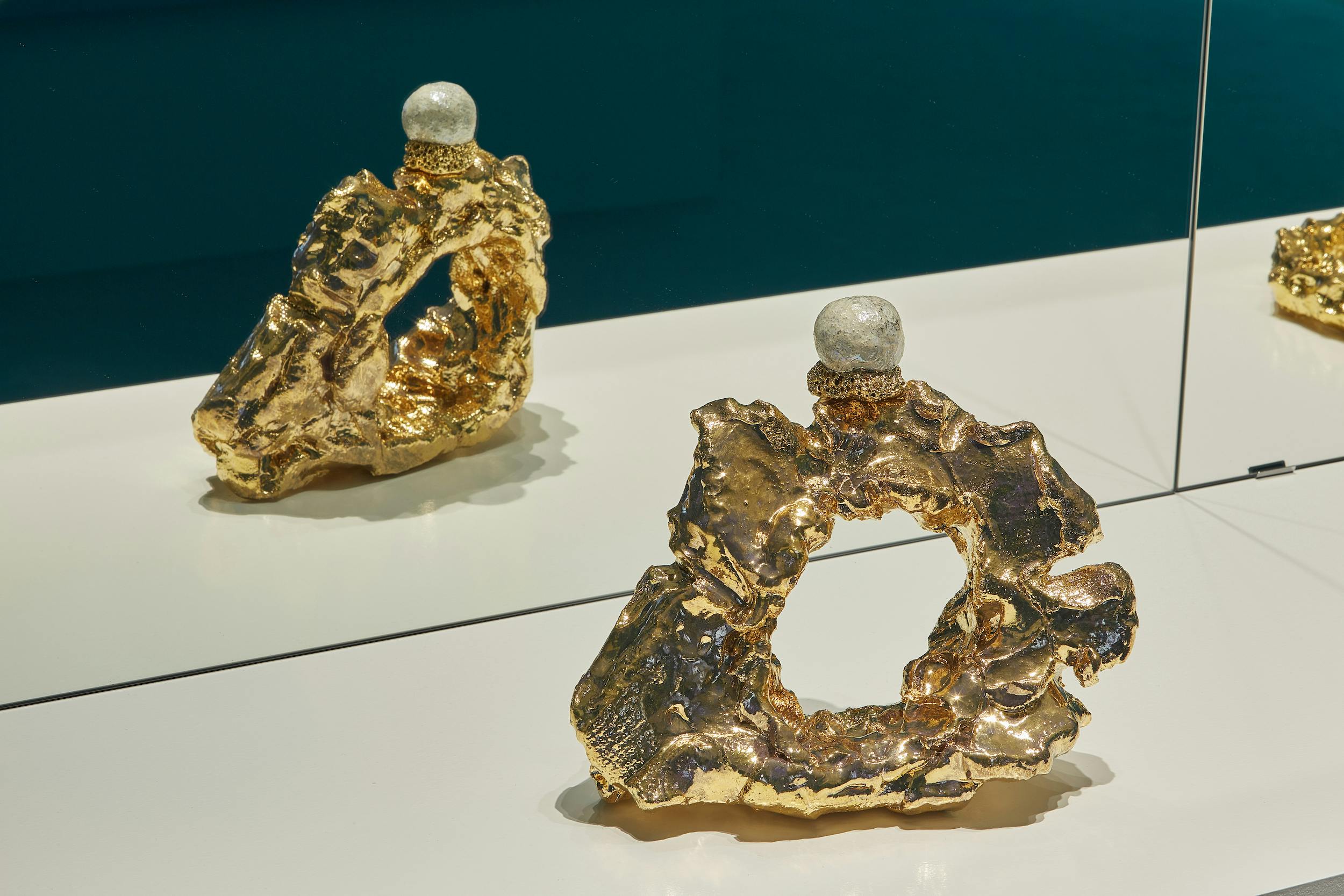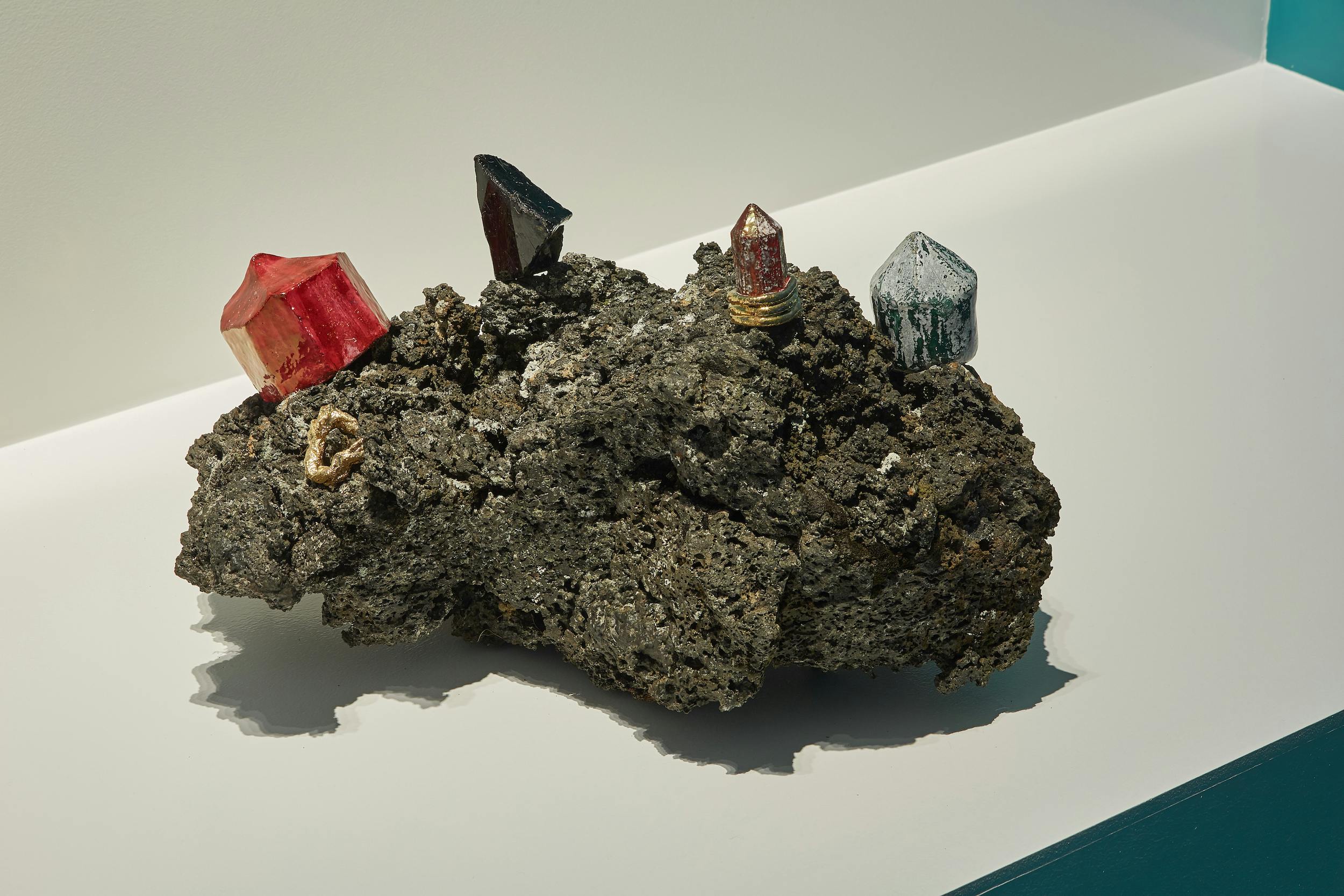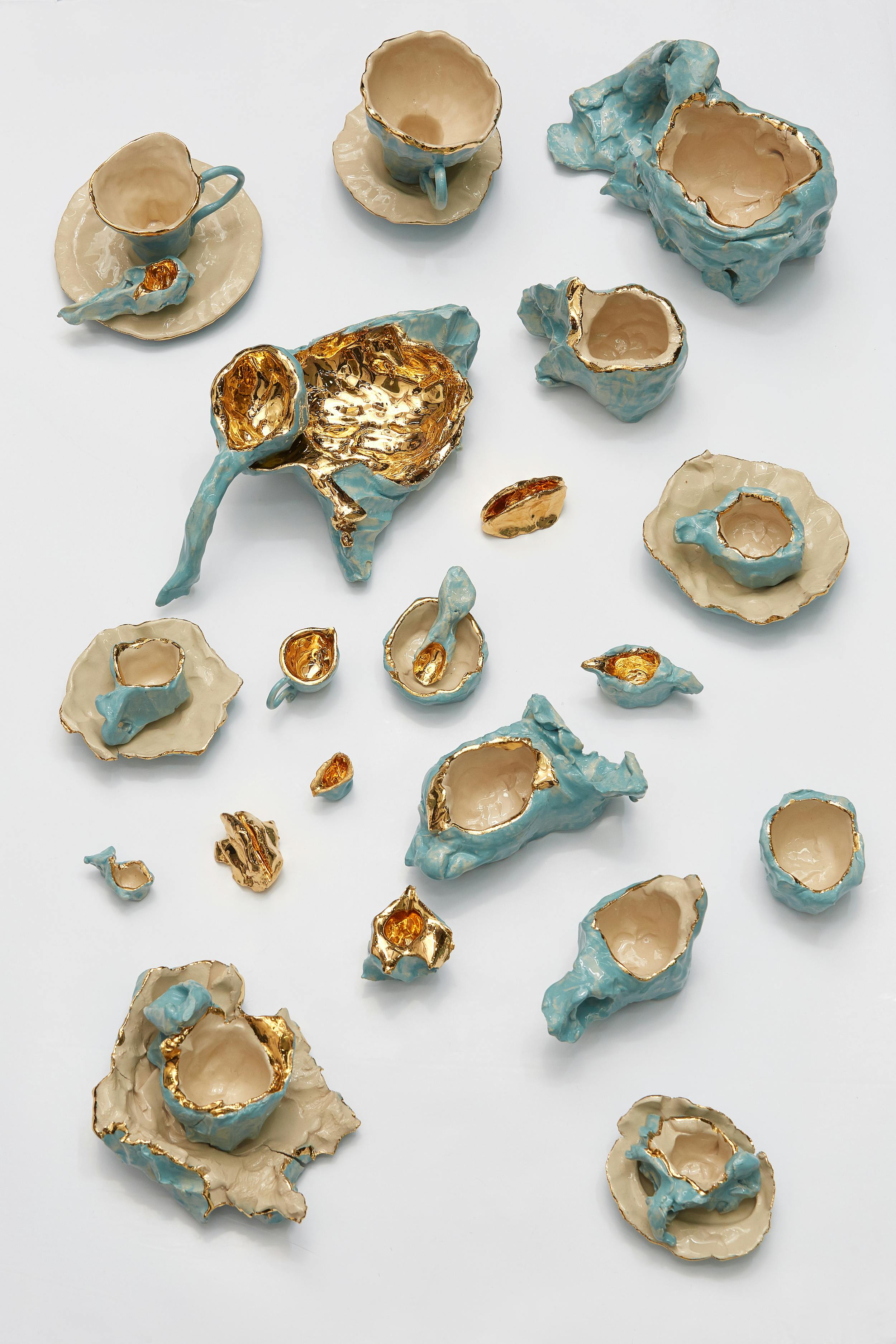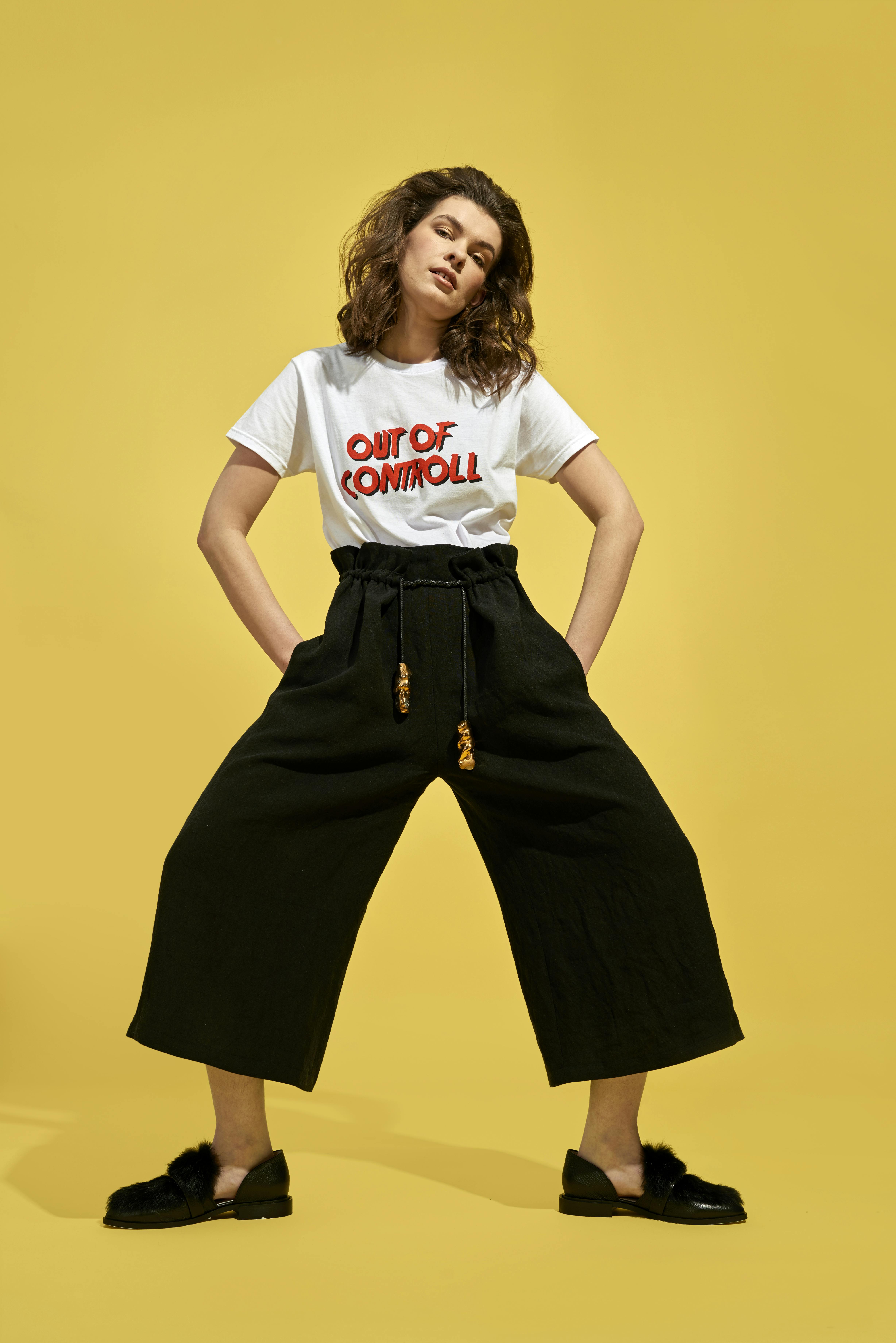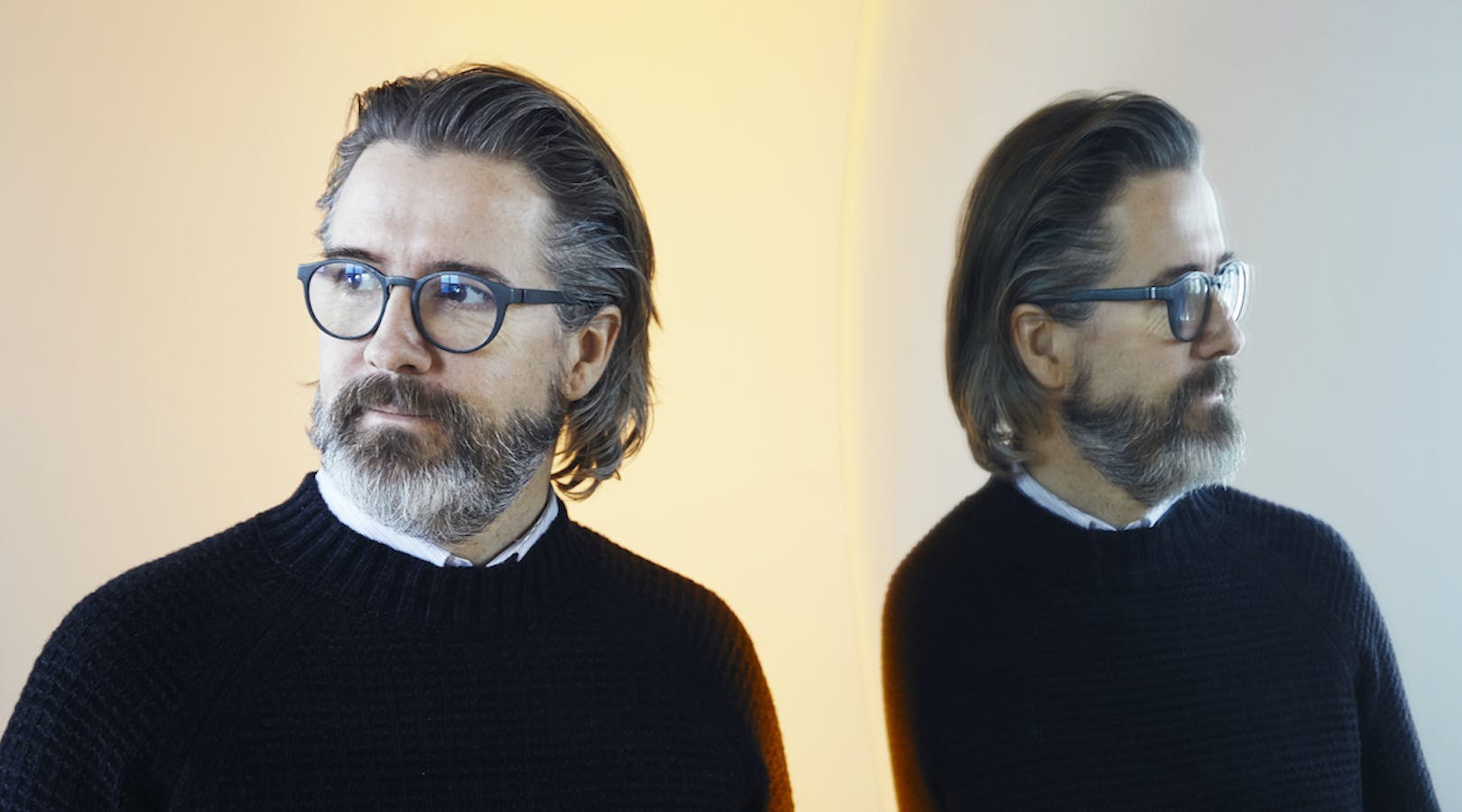Anything is possible
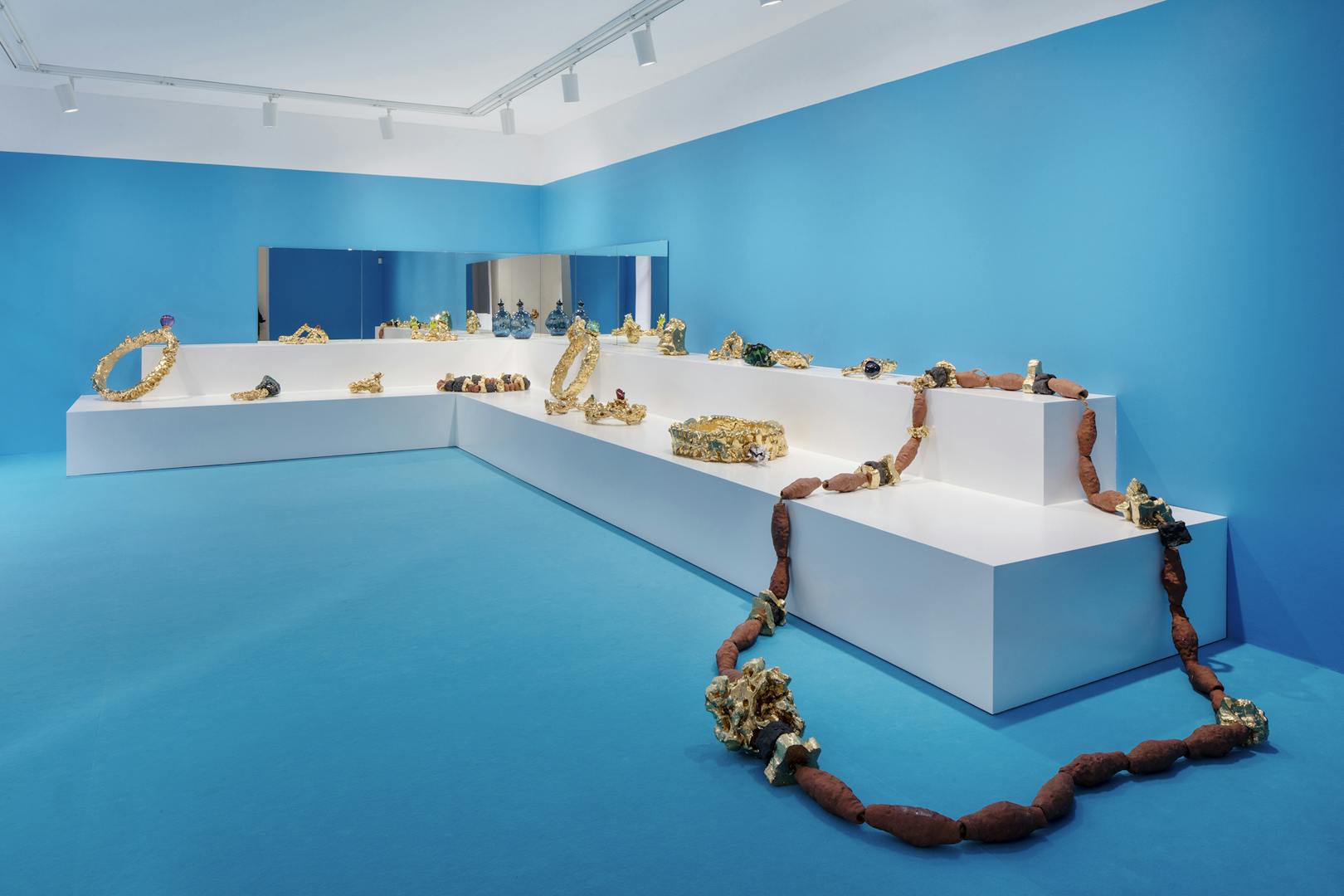
Edda Katrín Ragnarsdóttir, a product designer and ceramicist, has spent the last two years working closely with artist Egill Sæbjörnsson on creating the artistic world of the trolls Ūgh and Bõögâr. Egill was selected to represent Iceland at the Venice Biennale in 2017, but in the lead up to the exhibition, the two trolls took over his studio in Berlin and began working on an installation for the Icelandic pavilion, which was titled “Out of Controll in Venice” and received a great deal of attention and praise.
Edda Katrín graduated from the Iceland Academy of the Arts as a product designer in 2012 and then began studying ceramics at The Reykjavík School of Visual Arts by pure chance, according to her: “I heard an advertisement on the radio for a screen printing course at the school and decided to enrol. One morning, during the course, I was browsing the school’s website when, before I knew it, I had applied for the diploma programme in ceramics starting that autumn.” Edda says she had no idea what she was getting herself into: “I had never been interested in ceramics and, if anything, I was biased against clay as a medium, but on the first day it was as if a lightbulb went off in my head.” When asked what it is about clay that appeals to her over other materials, Edda says it’s the uncertainty; how unpredictable and lively it is. “Even if you do everything by the book, something can always go wrong. You never know what you’re going to see when you open the kiln. I sometimes forget that I studied product design and now refer to myself as a ceramicist. I learned everything about creating in the product design programme, but clay is my medium. Whether my works are categorized as design or art, they are part of my artistic research.”
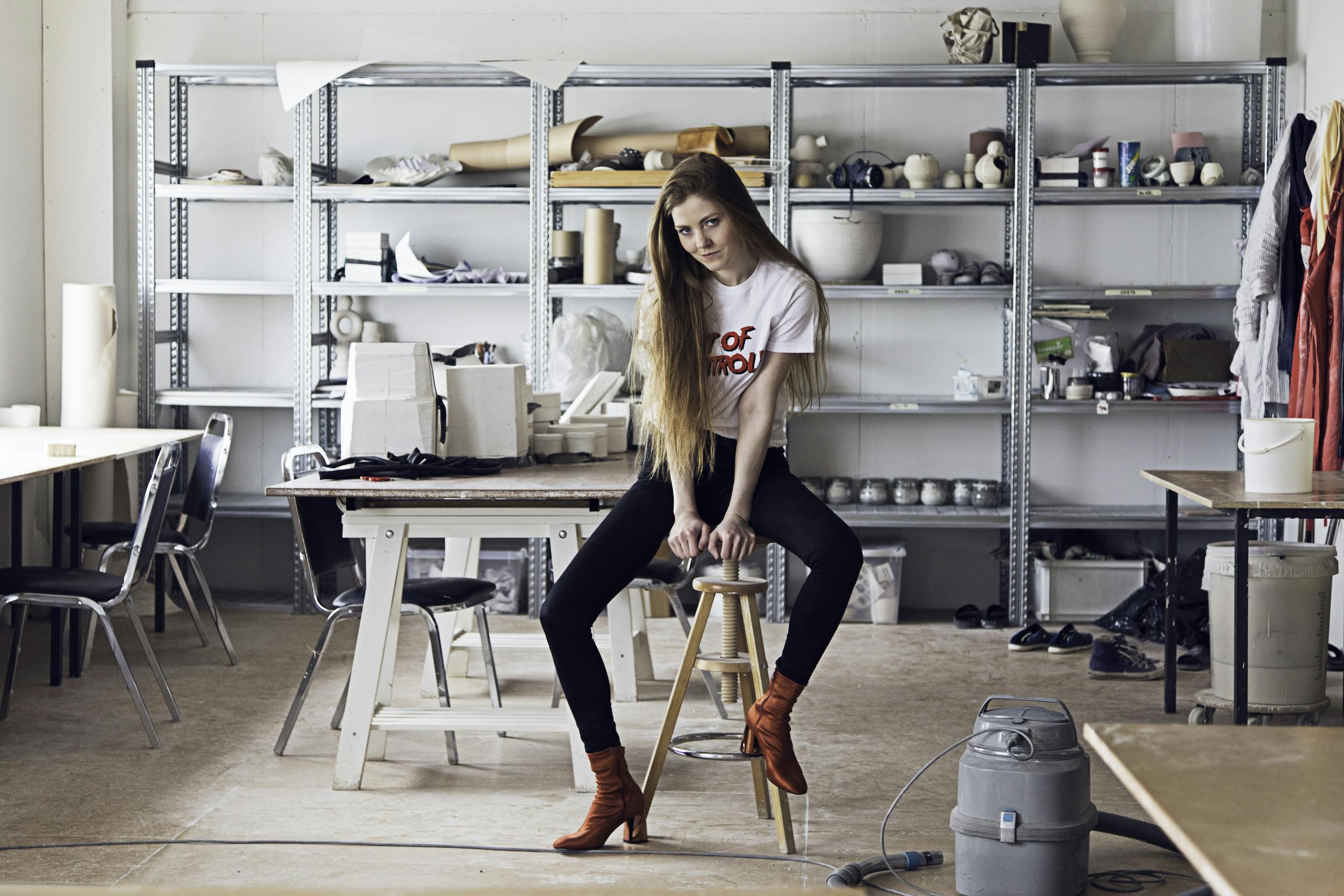
I sometimes forget that I studied product design and now refer to myself as a ceramicist. I learned everything about creating in the product design programme, but clay is my medium. Whether my works are categorized as design or art, they are part of my artistic research.
Edda first crossed paths with Egill and the trolls Ūgh and Bõögâr in spring 2016, when Egill was in Reykjavik working on prototypes for the trolls’ jewellery line, which was on display at the exhibit EGILL SÆBJÖRNSSON: Ūgh & Bõögâr – Jewellery in i8 Gallery in Reykjavik and in Galerie Anhava in Helsinki in late 2017. “I went to Berlin that summer and visited Egill at his studio. He told me that he would be representing Iceland at the Venice Biennale and planned on bringing the trolls to Venice. I asked if I could be his intern and we decided that I would come to Berlin as soon as I completed my ceramics diploma.”
While she was still in school, Edda assisted Egill with a few projects, including making jewellery and accessories for the clothing line that fashion designer Eygló Margrét Lárusdótttir designed in collaboration with Egill for the opening of the Icelandic pavilion in Venice. “Egill got in touch and asked me to work on a small project for them. The plan was to have a fashion show at the opening with some porcelain jewellery.” At that point, Egill and Eygló had created prototypes for Edda Katrín to work with. She made the pieces out of porcelain, which she then glazed and gilded at her kitchen table at home. “I spent all of Easter making the moulds and I went all over town to fire the pieces. I think I used four different kilns.”
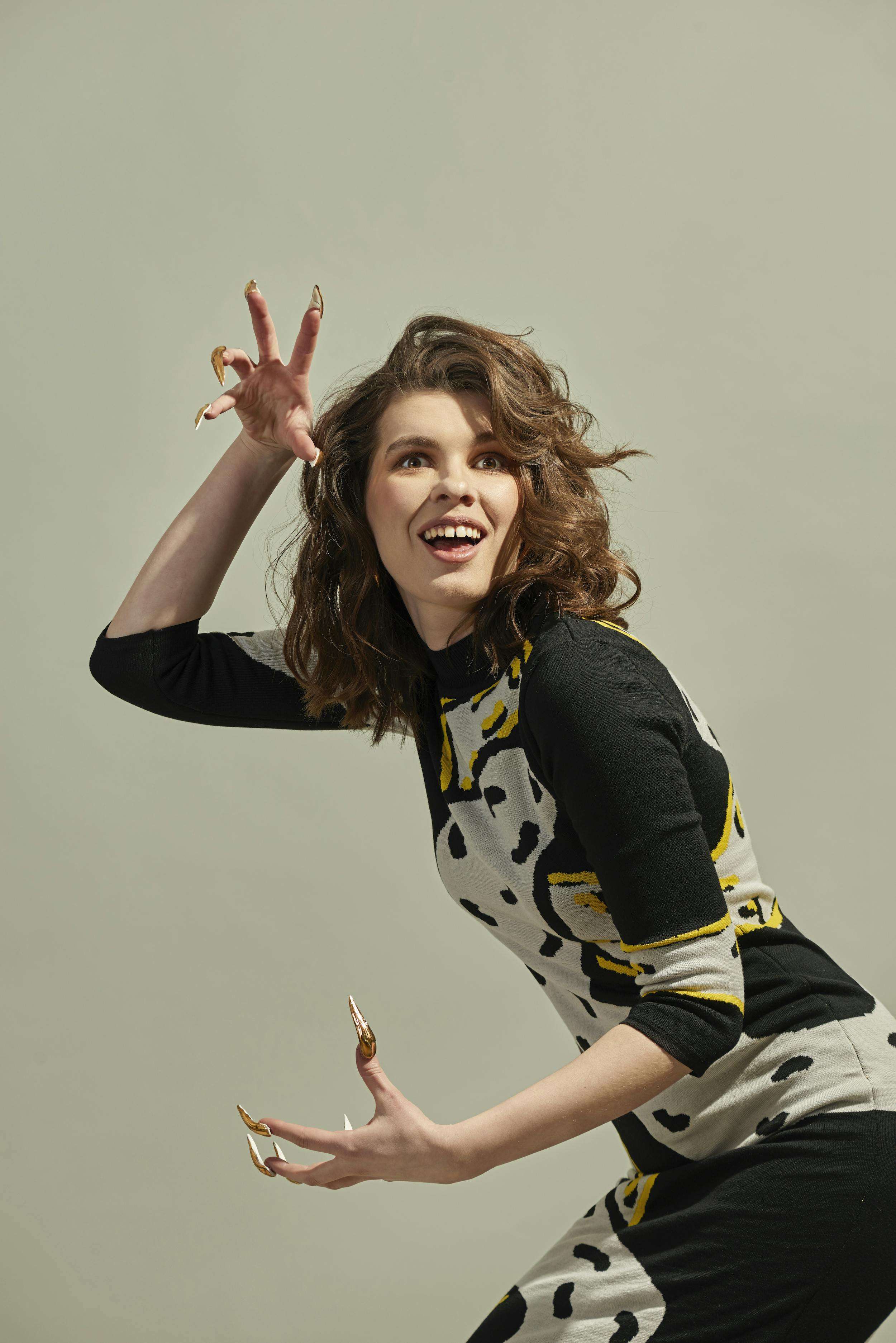
After graduating from The Reykjavík School of Visual Arts in the spring, Edda went to Berlin as planned and began working with Egill to prepare for his and the trolls’ exhibition, which was to be on display at i8 Gallery in the autumn. When asked about the nature of the collaboration, Edda said: “Egill always set the framework, which was a jewellery exhibition with 20 to 30 rings, diamonds, and necklaces in this case, and then we worked independently on our respective pieces. The framework was always clear, but there was also a lot of freedom within it.”
In making the jewellery, they broke nearly every rule she learned in school: “I came into the collaboration with knowledge about working with clay and when Egill put forth ideas and asked me if it were possible to execute them, I always said that anything is possible, one just has to find the right way to go about it.” Edda says Ūgh and Bõögâr also took part in the creative process from start to finish: “No matter where we were, in the studio or out biking, we were always talking about the trolls, about what they were doing and how they would approach the things we were working on.”
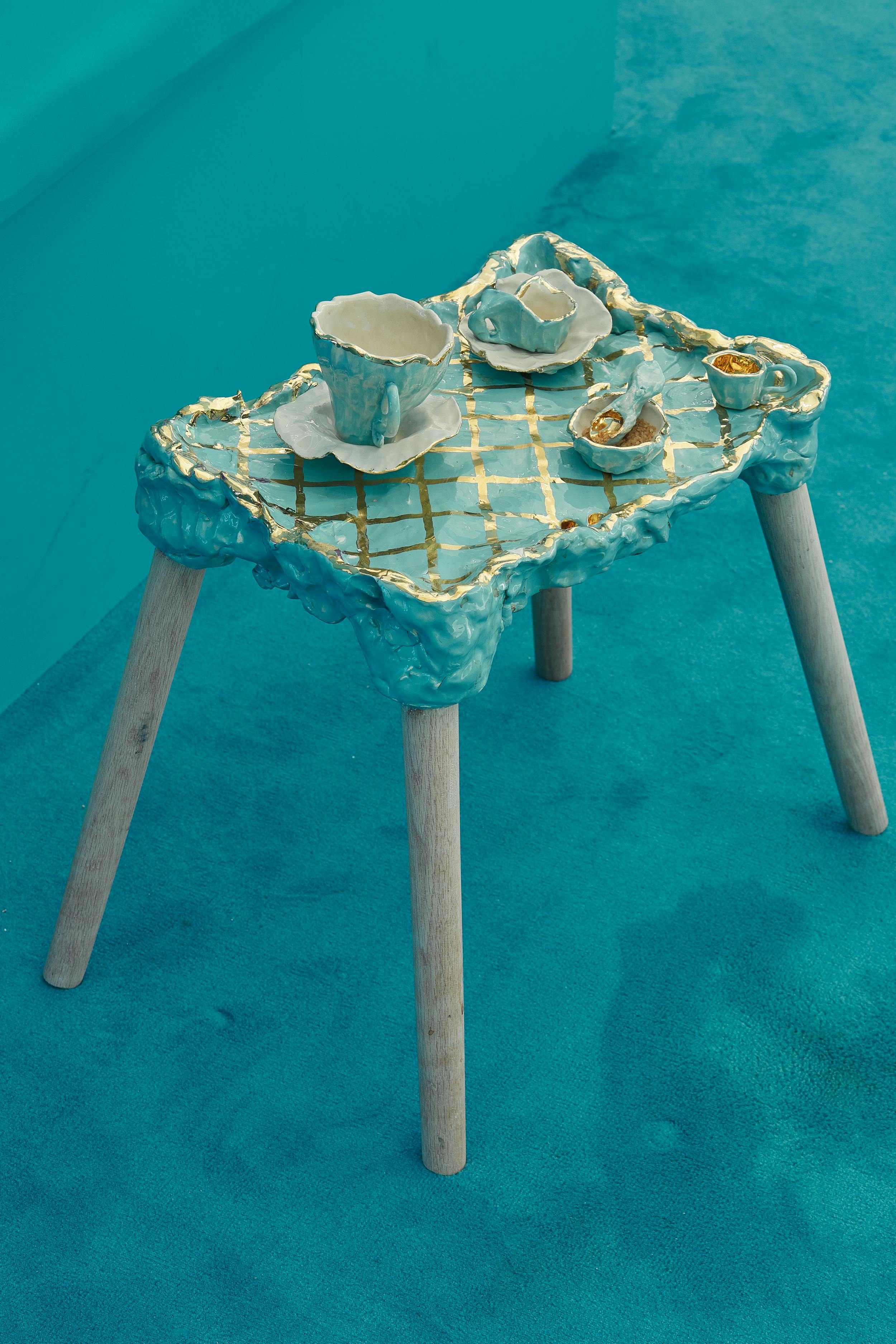
Even if you do everything by the book, something can always go wrong.
Edda is now in Kristinehamn, Sweden, where she is working with Egill on his newest project, KÄRAHÄR.
The title of the project is derived from the name of the city Kandahar in Afghanistan, and it means “nice to be here.” For this three-year project, the plan is to build a creative environment for the community in Kristinehamn, which is largely made up of asylum seekers. Egill has set up a sustainable restaurant in town; the vegetables come from a community-managed greenhouse and all of the tableware is made in a ceramics studio on site, which Edda opens to the public a few times per week. “On the first day, ten people showed up to the studio and on the third day, there were three times as many people. Things have gone extremely well, and these people are the most courageous people I’ve ever met in my life,” says Edda, who will live in Kristinehamn until the spring. At that point, she and Egill plan to continue collaborating. “Our biggest dream is to put on a third Ūgh and Bõögâr exhibition. I’m pretty sure the trolls are just getting started on their trip around the world.”
The interview was first published in HA07.
